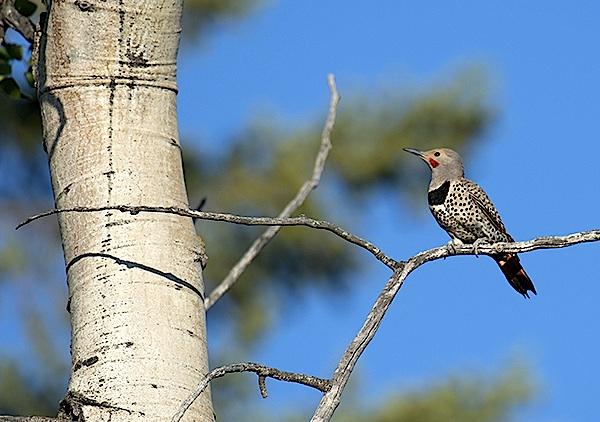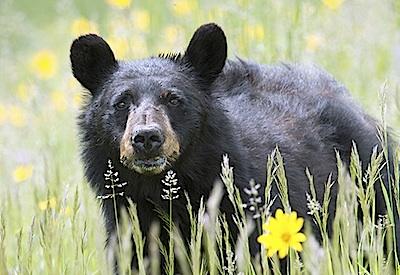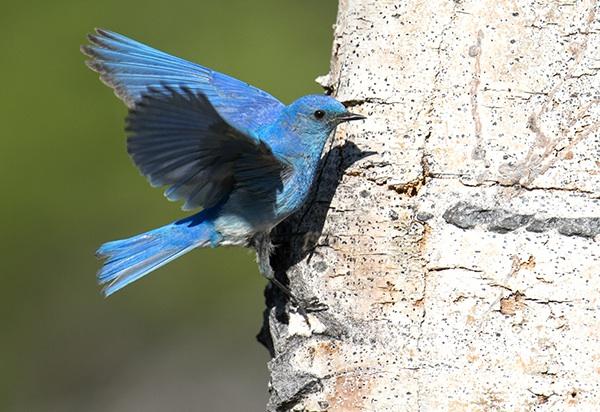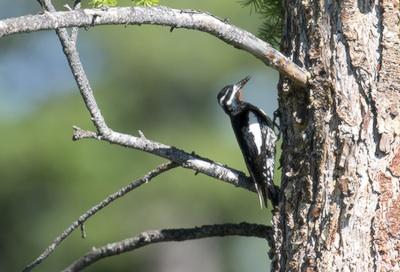
A young Flicker/Deby Dixon
Just last week I learned that there was a Williamson's Sapsucker nest in Yellowstone National Park, something that is apparently rare, according to another photographer, and that we could get photos of the adult bringing food into the nest. Last year, while photographing a Flicker nest, I saw the same bird and assumed that it was a Yellow-bellied Sapsucker. Well, I got the sapsucker part right.
I love bird photography, but am not good at discerning the markings that help one to tell one bird from another. As a result, I quite frequently do not know the type of bird I am photographing. A real bird photographer, in my opinion, is one who can provide the identity of the bird, and so I can never focus solely on birds. But, I am lucky enough to know a few folks who can help me out with the ID of a bird from time to time and that helps.
Not sure what is more dangerous, to post a bird photo and call it, "bird," or to give it the wrong name. Recently, I posted a baby Sandhill crane with its parents and called it a "chick." Big mistake because it is one that drives some folks nuts. A baby Sandhill crane is, I'm told, a "colt." Well, I grew up with horses and colts are the male offspring of a mare!
Yeah, some of those birder types who spend their lives looking through binoculars and can tell you the name of every bird in the forest, just by listening, can be a little snobbish when it comes to making mistakes, such as capitalizing and not capitalizing the name. But, then, they have spent a lot of time learning their passion, so why not?
Me, I just like to photograph birds, particularly when the bears, wolves, and other animals are not to be found anywhere, because their behaviors fascinate me. It would make it easier if I could look at the books (of which I have plenty) and tell one from the other, but we all have our handicaps and that is one of mine. Not knowing a bird by species can take some of the fun out of photographing them when you are trying to be a knowledgeable photographer, like I am. I like to know!
Well, the day myself and two other ladies, accompanied by their husbands, were standing around the sapsucker nest, other park visitors would drive by, see our lenses, park, and come running to see the bear. One man stood or sat at the side of the road, bird book in hand, to let the anxious people know that we were shooting a bird and then show them a photo of what it looked like. If he was busy with a crowd, I would turn around, shout "bird," and flap my wings, which was quite effective.
A few folks wanted to see the bird and came to look at the back of our cameras, or to watch, and some did not believe we were photographing a bird, rangers included, and so came to have a look for themselves. The disbelievers looked at the LCD screen on the back of the cameras and searched the landscape before moving on. A few people even stopped to get their own photos of the bird. For most of the day it was a zoo, with people coming and going, and we joked about making signs to let people know when we are focusing on birds because when people stopped to ask they often scared the birds away. There is very little privacy in a national park, unless well off of the road and in the back country, which can be hard for us old folks who have the time to be here, because the camera equipment can be heavy to carry very far. Or, we have injuries and aches and pains.
We had been photographing the sapsucker for about three hours and finally it was just the five of us and all was quiet. We were winding down and standing around talking, telling photography and wildlife stories when I spotted a small black bear sow right behind my friends.
"There is a bear behind you," I told them.

Bears can work their way into birding, too/Deby Dixon
Seems like there was a second when everything froze before we jumped for our cameras and turned around while backing up. The bear looked at us and headed our way - not aggressively, it just wanted to go that way instead of using all of the unoccupied ground that surrounded it and that could have taken the bruin far away from us. So, we were scrambling with not much room to scramble, while also taking a few shots, most of which were worthless because of the tall grass.
In a matter of seconds chaos erupted when every single park visitor magically appeared right in that exact spot. People were parking in the road, abandoning their cars and running towards the animal while the bear continued to wander and graze. It was a bear jam of epic proportions and I got out of there as quickly as possible.
The following day, with no bear around (at least not that I ever saw), I returned to photograph the sapsucker, in hopes that a baby would stick its head out, and noticed another woodpecker several dead aspen trees away, feeding a very loud baby in a nest. This bird turned out to be a Hairy woodpecker, according to a good friend of mine who has a huge passion for birds, and the parent was coming in to feed reqularly.
The youngster was hanging way out of the nest and it never shut up.
Meanwhile, I noticed a male and female mountain bluebird couple building a nest for what would most likely be their second family of the season. Actually, I thought that they were feeding chicks until looking at photos later and discovering that the female was carrying nesting materials.
And, so, sapsucker forgotten, I began watching the new birds. Except that the pesky sapsucker would fly in every once in awhile and land on the bluebird's broken aspen stump, earning the ire of the male who would promptly fly in and chase the pest away.

A flurry of blue you won't soon forget/Deby Dixon
Birds, if you watch them long enough, are quite protective of their families and often act much bigger than they are. I have seen red-winged blackbirds attack Sandhill cranes for getting too close to their nests, or for stealing their chicks, and the size difference is pretty tremendous. In fact, I have experienced Sandhill cranes surrounding me to chase me away, as well as being bombarded by smaller birds when I unknowingly got too close to their nests or habitat. I find the behavior of the birds and the way the adults function as a family to be fascinating.
I watched the adult Hairy woodpecker bring food in several times and was about at the point of wanting to tell that youngster to be quiet when there was a commotion, followed by wings flapping over my head. The baby decided it was time to grow up and fly, which it managed to do perfectly, landing on a branch behind me. The young woodpecker looked around and began pecking. Now, how did it know how to do all of that?

The Williamson's Sapsucker/Deby Dixon
Before long, the adult brought more food to the nest, only to find that it was empty. The two began calling to one another and I imagined mom saying, "I'm proud of you son." She led her young one off to a large pine tree and that was it - everything went silent. Except for that nest full of sapsuckers down the way.
Being there, on July 4, all by myself, surrounded by wildflowers, and seeing a young bird take its first flight was quite a treat and a moment I shall always remember.
Earlier, I had watched a Northern Flicker nest (another woodpecker) with four youngsters that were ready to fledge. I waited and waited, but never got to see them take that first flight. They were noisy birds also.
The rule in Yellowstone is that you are supposed to stay 25 yards from all animals, including nesting birds, except for wolves and bears, and then it is 100 yards. And, that you can't be any distance from the animal if you are disturbing them. From what I can tell, the birds are pretty brazen about letting anything know if they are intruding - big attitudes in small bodies.



Add comment